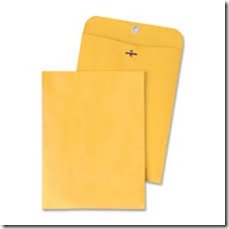Do you include a Cast of Characters in your mystery novel? Is this a helpful item to readers? In my experience, some readers like to have this directory. It serves as a refresher or helps to explain the relationships among the story people. Others may view a long list of characters with trepidation. In a mystery, they feel the tale might have too many suspects to remember. So who do we please?
The other thing to consider is placement. If you list your characters in the front of a book, potential new readers who click on “Look Inside” at Amazon will lose a page of text that you could have there instead. Same goes for a Table of Contents. While it may be good to put these in the front of a print book, for a digital copy the opposite might be true. Should we consider putting them in the back where they won’t interfere with that critical first look?
Some authors include entire family trees along with their sagas. This can be helpful if you are writing a series with multiple generations. But what about a single title? Is listing the cast a desirable item?
In my online files, I differentiate between Continuing/Recurrent Characters and the current Cast. The latter includes my main characters and the suspects for this story only. It does not include recurrent secondary characters that only make brief appearances. Those people go on my private list of Continuing Characters. I suppose if your series gets very lengthy, you could insert a guide to all the characters in this particular universe, whether they have blood ties or not. This type of guide should definitely be part of the back bonus materials.
The Cast List that I include for each story is as brief as possible. You can include a teasing question about each suspect or just describe their straightforward role. Be careful not to include spoilers that give away a character’s secrets. There is a short CoC in Peril by Ponytail. Click on the Look Inside feature.
What do readers think?
One reviewer recently said about Peril by Ponytail: “I really liked that at the beginning of the book there was a ‘List of Characters’ outlining everyone within the context of the series.”
Then I asked these questions on my Facebook Page: Do you like a Cast of Characters in a mystery novel? Is it helpful or intimidating? Does it matter if the list is up front or in the back material?
Negative Responses:
“I don’t usually look if it’s included. I like to discover the characters as I read the book.”
“No. It makes it seem too theatrical, like I’m being told right from the start that this isn’t real.”
“I won’t look at it unless I’m having a hard time keeping characters straight or am having long lag times between reading and need a refresher.”
Positive Responses:
“Up front! It’s especially helpful if you haven’t read the previous books in the series.”
“I like it because it gives me a sense of place, especially with a new series. Also, if I get confused, I can go back to the list to figure out who’s who.”
“I like it, and I usually refer back to it as I read and come across each character. I like to know how they relate to each other.”
“If the book is a part of a series, the cast of characters can be very helpful if you didn’t start at the first of the series.”
“I like it if there are a lot of characters, of if you have a character who only appears a few times, several chapters apart. And put it in the front.”
“Up front! I recently read two mystery books that involved several guests at parties and a quick cast of characters guide would have helped.”
“I think it can be helpful if there are a lot of characters or if they have similar/unusual names. Also, no spoilers in the list.”
“I like it in the front. Sometimes new characters are hard to keep straight.”
“I like it at the front. That way I know it’s there if I need to refer back to it. I also love maps!”
“Up front. I always read it and I go back to refresh my memory on who a character is.”
“I like a CoC and a floor plan of the main character’s home.”
And More! This question garnered over 960 people reached. View it here: https://www.facebook.com/NancyJCohenAuthor
As you see, it’s a mixed bag of responses, but the majority appears to be overwhelming in favor of including a list of characters in the front of a book. What is YOUR opinion?


